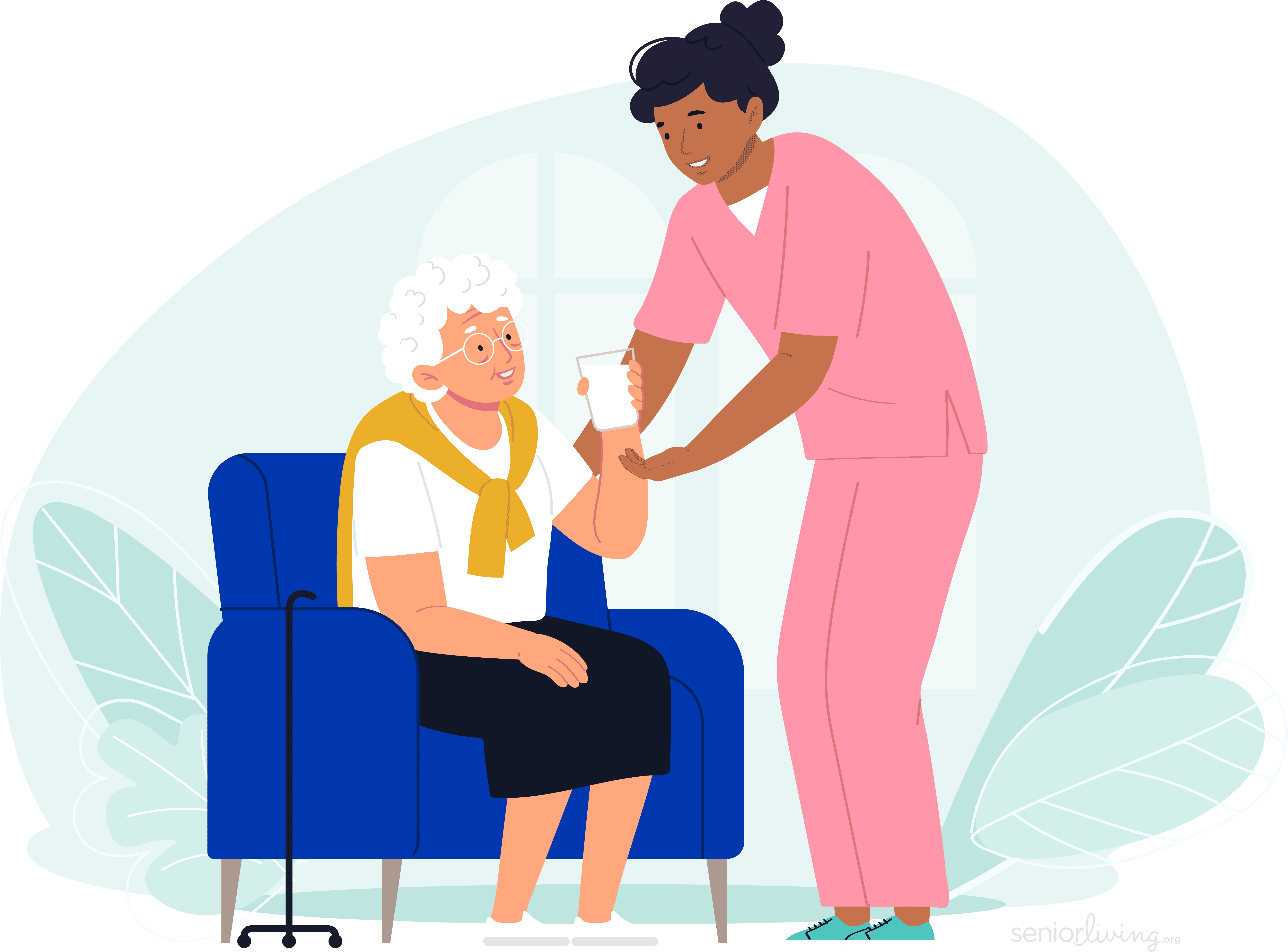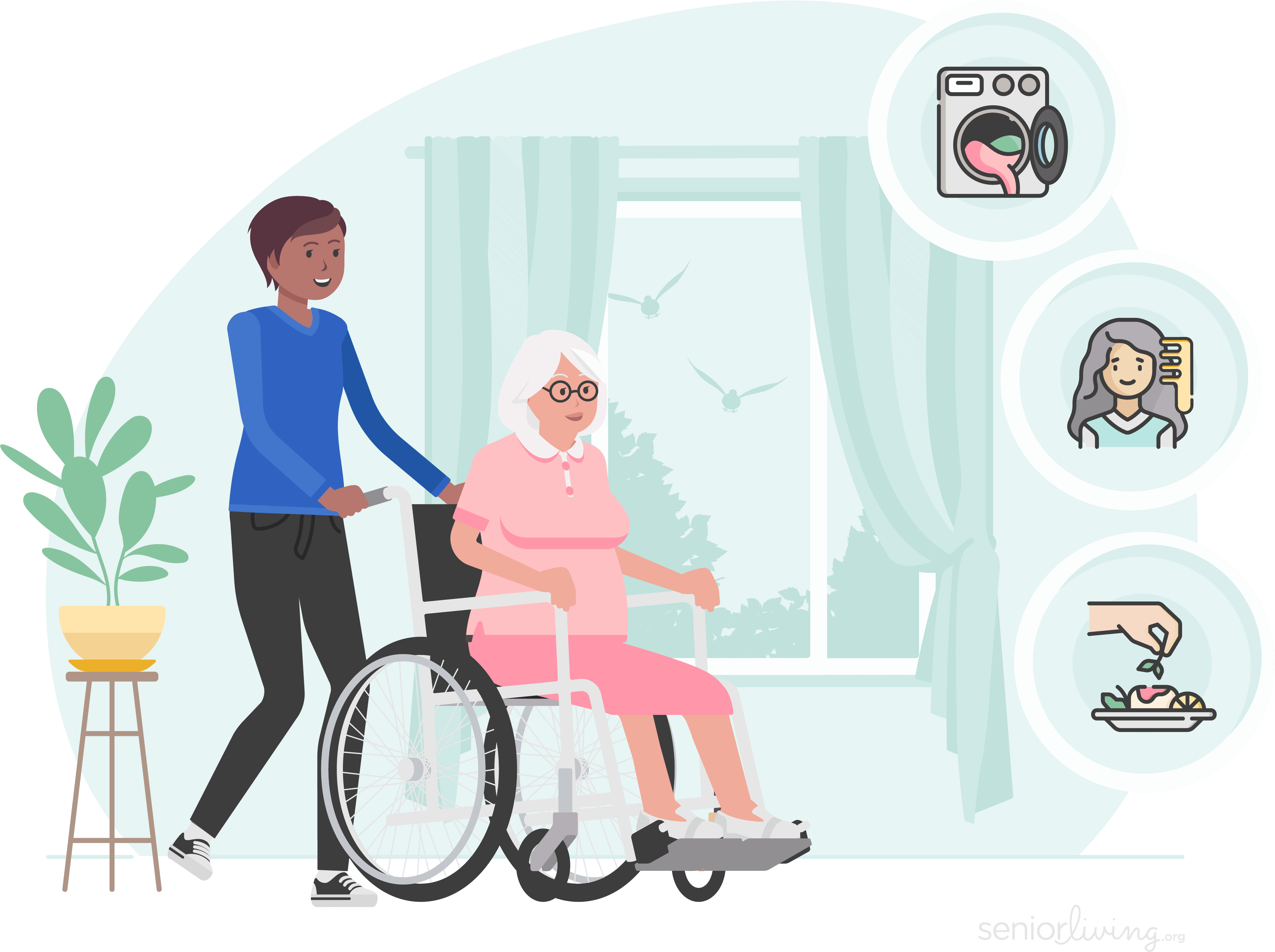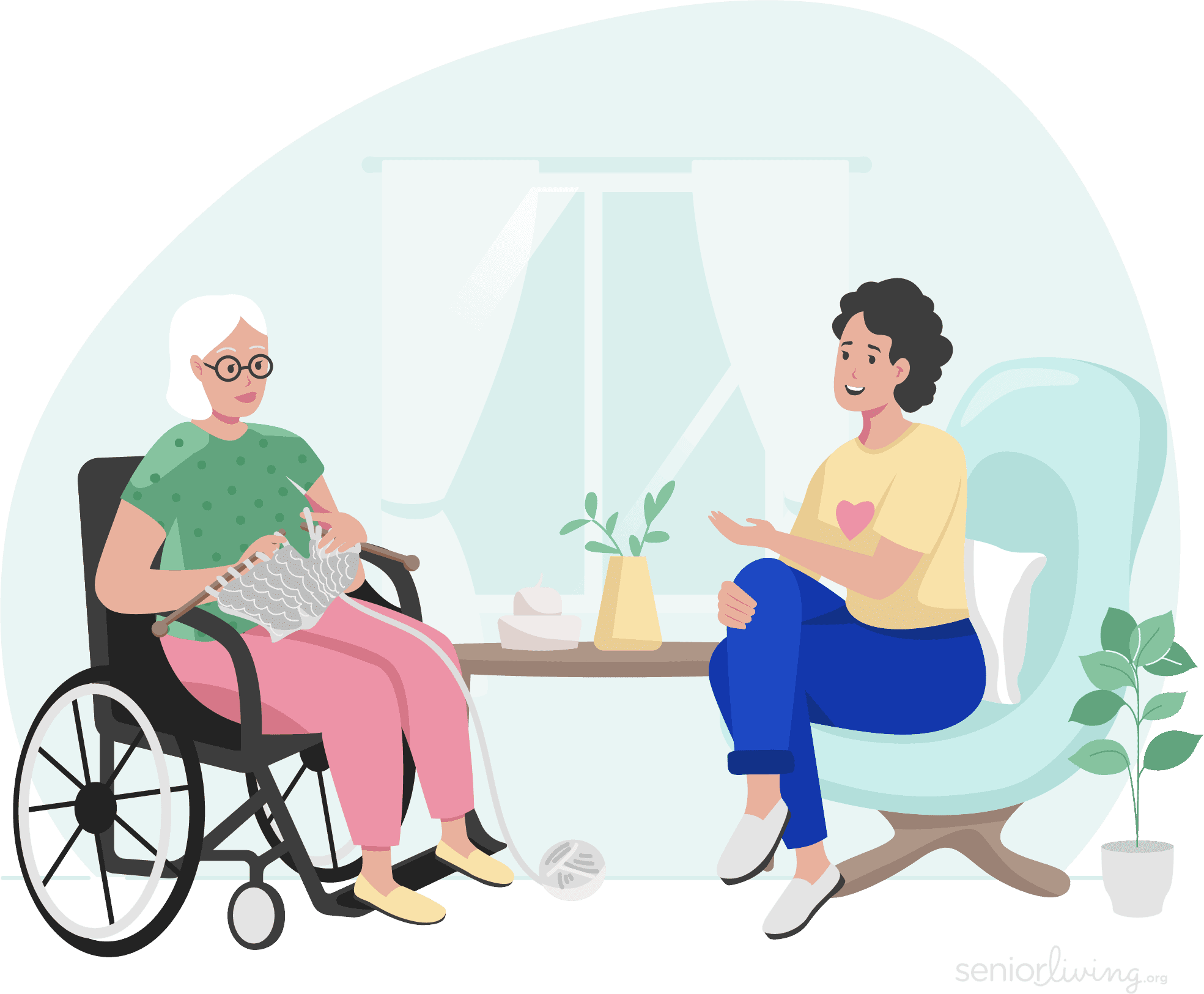Alternatives to Assisted Living in 2025
There are many alternatives to assisted living, including home care, adult day care, medical alert systems, home safety modifications, and more.
SeniorLiving.org is supported by commissions from providers listed on our site. Read our Editorial Guidelines
Find Assisted Living Near You
Join 200,448 Families Who've Found Assisted Living Communities on SeniorLiving.org.
Or Call: (855) 241-1699Find Assisted Living Near You
When you can no longer live independently, you may think an assisted living facility is your only option. The majority of older adults, however, prefer to remain in their own homes — where they get many physical and psychological benefits — for as long as possible.1
As you age, it’s natural to need assistance with daily tasks such as grooming, bathing, and preparing meals, but it may be upsetting to think you must now depend on someone. Seniors who live alone may mistakenly believe they have no choice but assisted living, because they don’t have help in the home.
The good news is that assisted living alternatives exist and they can help older adults avoid moving into expensive facilities and remain where they want — in their own homes. Read on to learn about other ways seniors can get assistance with activities of daily living (ADLs), housekeeping, and medication management in their home environment. You’ll also learn how to keep your home safe and where else you could live without paying the hefty price of an assisted living facility.
Table of Contents
Medical Alert Systems
Medical alert systems are one type of monitoring device that can allow you to age in place in your home. Alerts now come in a variety of sizes, styles, and models. They offer different features, functions, and optional add-on products. Recent technological advances in the devices provide seniors with freedom inside and outside the home.
There are high-tech devices such as smartwatch systems, smart speakers, and on-the-go pendants. Features such as fall detection, 24-hour monitored systems, and mobile GPS tracking give older adults more freedom than ever. Many connect you to a service that can send help directly to you in case of an emergency.
Pro Tip: Check out which products our experts chose as the best medical alert devices of 2025!
Keep your specific needs in mind when considering the type of medical alert device and system to buy. Manufacturers and retailers understand the importance of providing high-quality protection, so you can feel reassured residing at home with the help of a medical alert system.
Safety Steps
You may be able to remain at home by making home modifications and purchasing safety products. Safety for seniors may require an investment in a shower chair, walk-in tub, adjustable bed, or grab bars. You also may need to buy a stair lift or finally get those hearing aids your family has been begging you to buy.
Learn about and have plans in place for fire prevention, fall prevention, protection from scams, and protection from identity theft. By keeping your safety at the forefront, you and your loved ones will sleep peacefully.
Our free housing and care finder uses your unique needs to curate a list of the best options in your area.
Home Care and Custodial Care
Home care provides a means of receiving primarily nonmedical personal care and companionship services in your home. It works well if you don’t have extensive medical needs. You may, for example, need help from caregivers with everyday activities, someone to watch television with, or reminders about taking your medications.
Pro Tip: Home care is not the same as home health care. Home health care services are needed if you are recovering at home after a hospital stay, injury, or illness. In those situations, you’d require health and medical assistance from a health aide, physical therapist, speech therapist, or nurse.
Custodial care is nonmedical care that primarily helps people with ADLs. Review our guide to custodial care to learn what custodial caregivers do, the types of custodial caregivers there are, the average costs of care, where to find great caregivers near you, and more. Custodial care is often focused on supporting seniors with disabilities and chronic conditions who require ongoing assistance.
Hiring home care and custodial care professionals can help you remain in the comfort and familiarity of your own home and get the important help you need to flourish.
Senior Day Care
Senior day care, often called adult day care, allows older adults to go to a facility such as a community center or agency during the day and return home at night. It provides an opportunity to engage with other seniors and gives family members who are caregivers the time to go to work, run errands, or have a few hours of respite.
Respite Care
An estimated 53 million people in the U.S. are unpaid caregivers, usually helping spouses, parents, and grandparents who are aging. They provide about $600 billion in unpaid labor per year.2 Unfortunately, many family members struggle to balance caregiving with their work demands and other life responsibilities.
If you have a loved one helping you at home, the National Institute on Aging suggests you look into respite care. It provides short-term relief for primary caregivers, ranging from a couple of hours to many weeks. The cost for respite care and information on how to pay for it can be found on our site.
Living With Family Members
Some seniors and family members agree that it’s best for the older adult to reside with the family. A 2018 AARP survey found that 67 percent of older adults would consider living in an accessory dwelling unit (ADU) or granny flat. Seniors benefit by being close to a family member, but they still retain independence by having a separate space. One-third of the respondents said they would consider building and living in an ADU.3
Extra Tip: What about seniors without family who are solo aging? Here are two pointers: Give your family members, neighbors, or friends access to your home, computer, and file cabinets so they can quickly access your important information, especially in an emergency. Also hire a financial expert and perhaps elder care attorney to assist you with your finances and legal matters.
Family members who have responsibilities throughout the day may feel more at ease knowing their parent or grandparent is nearby.
Senior Foster Care
Senior foster care provides a home for adults with special needs, and it’s similar to a group home. At senior foster care, a few older adults reside together in a small residential setting. It provides a closer community compared to the larger size of an assisted living facility. Although senior foster care workers assist with ADLs, they do not provide medical care.

SeniorLiving.org is supported by commissions from providers listed on our site. Read our Editorial Guidelines
What Is the Trend Regarding Alternatives to Assisted Living?
Older adults are living longer and staying more active than past generations, and they take their independence seriously. Today’s more active seniors may balk at the idea of moving into an assisted living facility and choose active senior living communities instead.
The current median cost of assisted living facilities is an estimated $66,126 annually, so many older adults and their families are looking for more cost-effective ways to support seniors as they age.
Resources for Alternatives to Assisted Living
Here are some resources to check out to learn more about what’s available in your area when considering alternatives to assisted living.
Your local Area Agency on Aging may offer more services in your area. Health-care providers and social workers may also have suggestions for ways to support your loved one other than sending them to an assisted living facility. You can also call our senior helpline to learn about alternatives to assisted living and how to find caregivers, home care, and other useful services.
>> Keep Reading: 10 Places to Retire for $2,000 or Less
NIH. (2022). Aging in Place.
CBS News. (2024). The hidden costs of unpaid caregiving in America.
AARP. (2020). Accessory Dwelling Units Allow Homeowners to Choose Where They Age.



